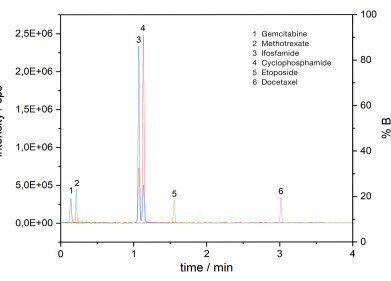Bioanalytical
Can Chromatography Discover What’s Behind the "World's Smelliest Fruit"?
Mar 14 2017
Durian — fruit belonging to the genus Durio. Some consider it a delicacy, particularly in South East Asia with a pleasant, sweet odour. But for the rest of us it is known as the world’s smelliest fruit. The smell is so strong that it is often banned on public transport and hotels. But despite the smell, it is said to have a creamy taste.
Many South East Asian people consider it to be the ‘king of fruits’. It is a large fruit — growing up to 30 centimetres in length and 15 cm in diameter with a thorn covered husk. It is this covering that gives the fruit its name with the name durian derived from the Malay-Indonesian word for spike — duri. But it is the smell of the fruit that makes it well known in the West — and now scientists have uncovered some of the secrets of the durian’s smell — often described as gym socks and rotting meat.
Pity the poor olfactory scientists
In a paper published in the Journal of Agricultural and Food Chemistry — Insights into the Key Compounds of Durian (Durio zibethinus L. ‘Monthong’) Pulp Odor by Odorant Quantitation and Aroma Simulation Experiments — scientist’s from German Research Center for Food Chemistry have identified nineteen ingredients from the fruit that contribute to the unique smell — and also discovered that they only need two compounds to recreate the overall odour of durians.
The scientists screened the volatile compounds using aroma extract dilution analysis and gas chromatography-olfactometry (GC-O). Gas chromatography is a common technique used to separate volatile compounds, and the use of an olfactory detector is used when odours common to humans are involved. The use of olfactory detectors is discussed in the article, Volatile Organic Compound Determination in Health-related Research: A Review.
How active are the odours?
The team quantified the odour activity values (OAVs) for the compounds in the pulp of the durian fruit.
OAVs are simply a method of quantifying and comparing odour compounds in a sample. They allow scientists to rank and compare compounds. It is rare in food samples to find OAVs above 100,000. In this research the team identified three main compounds:
- ethyl (2S)-2-methylbutanoate (OAV 1,700,000) smells fruity,
- ethanethiol (OAV 480,000) smells like rotten onion, and
- 1-(ethylsulfanyl)ethane-1-thiol (OAV 250,000) smells like roasted onion.
In addition to identifying the compounds in durian fruit that contribute to its pungent odour, the team also performed tests that allowed them to rebuild the scent of the fruit. Surprisingly, the team found that they only needed two compounds to mimic the scent of the fruit — ethyl (2S)-2-methylbutanoate and 1-(ethylsulfanyl)ethane-1-thiol.
Events
Apr 22 2025 Kintex, South Korea
Analytica Anacon India & IndiaLabExpo
Apr 23 2025 Mumbai, India
Apr 27 2025 Portland, OR, USA
May 11 2025 Vienna, Austria
May 18 2025 Tempe. AZ, USA
.jpg)












